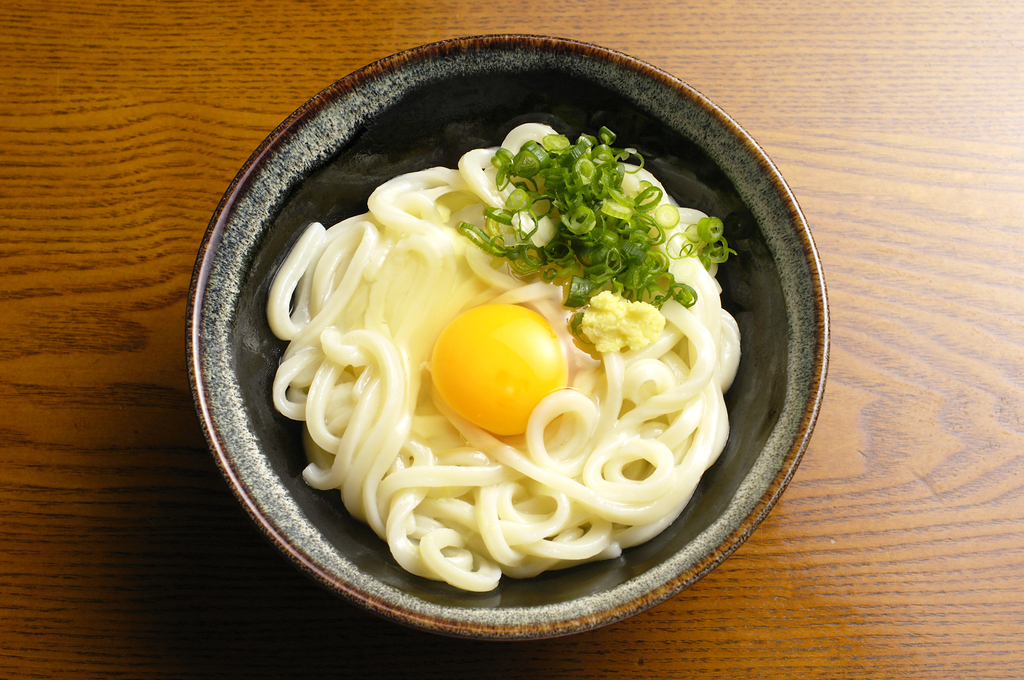
Nowhere is udon more popular than Kagawa Prefecture, where the per-capita consumption is said to be greater than anywhere else in Japan. Kagawa is famous for its own distinct udon, known as “Sanuki udon.” Sanuki is the Edo-period name for what is now Kagawa Prefecture, and for hundreds of years udon has been a mainstay of the Kagawa diet. Since the Edo period, Kagawa has become famous for the delicious taste of its udon noodles.
Kagawa has long been famous for its udon. Several factors contributed to the making of delicious udon. Kagawa has long been famous for good-quality flour, and a rich supply of the iriko dried sardines used to make the distinctive Kagawa udon broth. Additionally, because of the low rainfall there was a vibrant salt-making industry, and salt is important ingredient in udon.
Also the island of Shodoshima has long been famous for making delicious shoyu used for the broth. A special feature of Sanuki udon comes from the pounding of the dough with one’s feet, which makes its glutinous quality even more elastic and chewy.
Throughout the year the people of Kagawa eat great quantities of udon noodle dishes, typically prepared from top-quality wheat, salt, soy sauce, and a delicious broth (dashi) made with the small dried fish known locally as iriko, (katakuchi iwashi). Kagawa Prefecture is the birthplace of self-service udon known as “self udon,” where diners decide for themselves what to add to their udon, and Kagawa is also famous for the great variety of udon dishes it serves.
Here is a list of some types of udon noodles to try:
Kake
Udon noodles with a light broth, minced scallions, and sometimes tempura flakes.
Kijoyu
Udon with just little soy sauce added. Sometimes seasoned soy sauce is used, with Japanese condiments or other flavorings added.
Bukkake
One of the most distinctive of Kagawa udon dishes, it is served with a smaller amount of heavier broth.
Yudame
In yudame udon, the noodles are cooked until they are done, then quenched in cold water, and then heated once more. The diner dips the noodles in broth before eating.
Shippoku
This is udon in a sweetened broth with meat or perhaps also vegetables. Home cooks generally add taro (sato-imo), carrots, Japanese radish (daikon), or fried tofu, while in restaurants it is often served with tempura or chikuwa fish paste.
Kama-age
This udon is eaten piping hot, taken straight from the pot and served without rinsing. It tastes a little undercooked and has a slightly sticky texture.
Kama-tama
For this dish, egg, broth, Japanese condiments and perhaps soy sauce are added to kama-age in a bowl.
